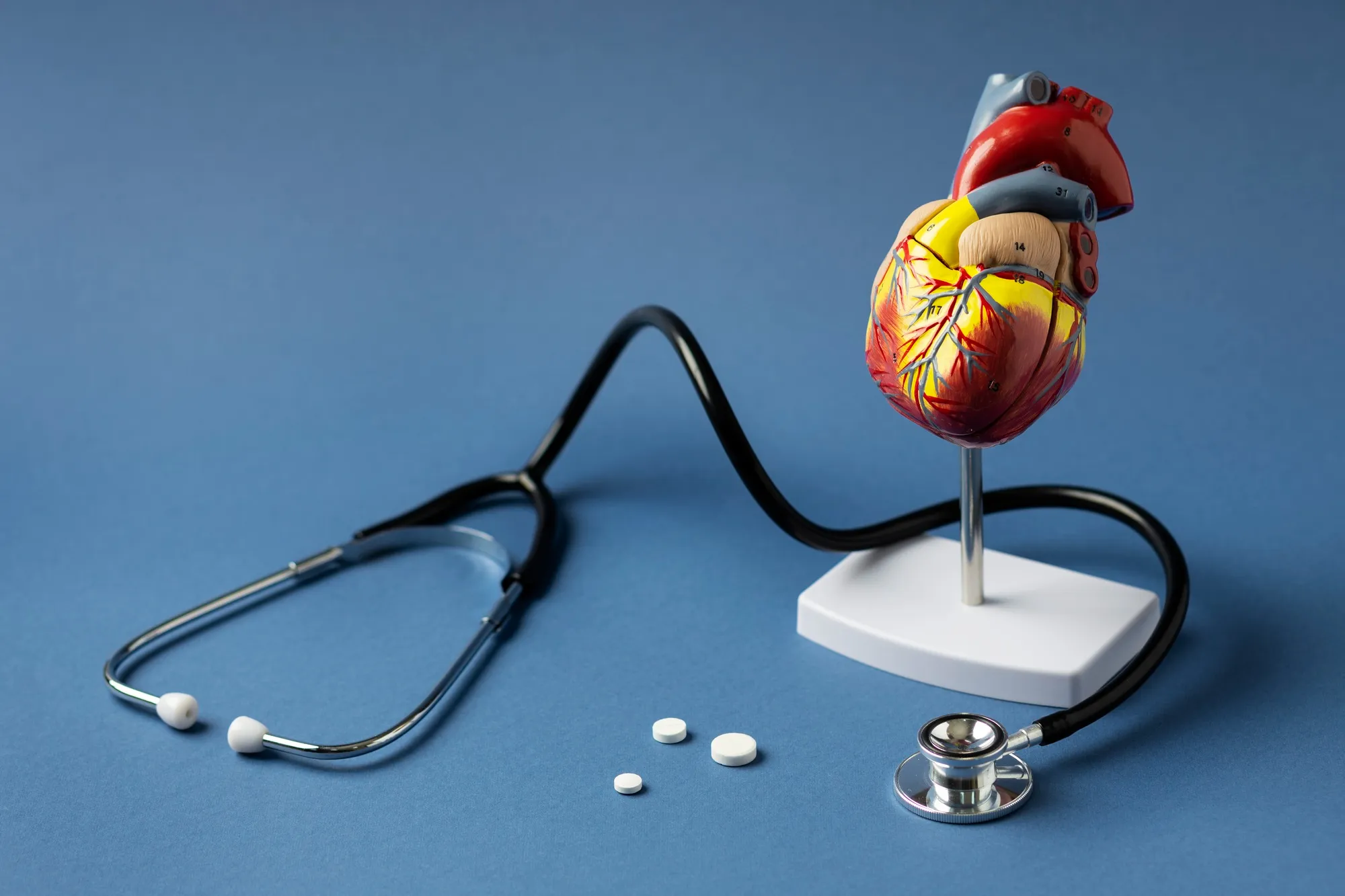Keywords
1. High-density Lipoproteins Abdominal Aneurysm
2. HDL Biomarkers Aortic Disease
3. HDL Therapy Aneurysm Prevention
4. Aortic Aneurysm Pathogenesis HDL
5. HDL Anti-inflammatory Aneurysm Treatment
In a groundbreaking study led by renowned researcher Olivier Meilhac from Université de La Réunion and Inserm, UMR 1188 Diabète athérothrombose Thérapies Réunion Océan Indien (DéTROI), new light has been shed on the role of high-density lipoproteins (HDLs) in abdominal aortic aneurysmal disease. The research, published in the prestigious journal EBioMedicine, discusses the complex role of HDLs, not just as biomarkers but as potential bio-actors in the pathogenesis and progression of abdominal aortic aneurysm (AAA) disease. This not only opens new doors for understanding the disease but also paves the way for novel therapeutic interventions.
Abdominal aortic aneurysm, a life-threatening vascular condition, is characterized by the abnormal bulging of the abdominal aorta, the major vessel supplying blood to the lower half of the body. The expansion of the aortic wall, without timely intervention, can eventually lead to rupture, resulting in high mortality rates. Thus, early detection and prevention is of paramount importance.
Traditionally, the focus on HDLs has been mostly confined to their role as “good cholesterol,” primarily responsible for transporting cholesterol from the bloodstream and artery walls to the liver, where it’s processed and removed from the body. However, recent studies, including those cited by Meilhac et al. (DOI: 10.1016/j.ebiom.2019.04.053), have explored the diverse functionality of HDL particles, moving beyond lipid transport to their involvement in immunological responses, and atheroprotective mechanisms.
Specifically, Meilhac and his team emphasize the potential anti-inflammatory and anti-oxidative properties of HDLs that extend their significance in aortic disease. This understanding stems from research by Martinez-Lopez et al. (2019), which identified a correlation between APOA1 oxidation, a component of HDLs, and dysfunctional HDLs in human abdominal aortic aneurysm. Researchers have found that HDL particles undergo structural and functional modifications in the presence of oxidative stress, leading to an impairment in their protective roles against atherogenesis and aneurysmal progression.
Supporting the bio-actor hypothesis, Nordon et al. (2009) provided a comprehensive review of the current theories for AAA pathogenesis. The study illustrates the multifaceted nature of AAA development, encompassing inflammation, proteolysis, and smooth muscle cell apoptosis. Interestingly, HDL antielastase activity, as reported by Ortiz-Munoz et al. (2009), holds the capacity to prevent smooth muscle cell apoptosis (anoikis), highlighting another protective mechanism HDL particles may exert against aneurysmal disease.
The significance of infectious agents in AAA was further explored by Delbosc et al. (2011 and 2016) who investigated the role of Porphyromonas gingivalis, a periodontal pathogen, in aneurysm pathogenesis and progression. Their research concluded that P. gingivalis could induce neutrophil activation, contributing to the development of AAA. Moreover, these studies found that HDL therapy could inhibit disease progression prompted by the pathogen, suggesting a novel therapeutic potential for HDLs in combating AAA.
Additionally, Tran-Dinh et al. (2013) studied the endothelial protective properties of HDL, which further supports their function as bio-actors in vascular diseases. HDLs facilitate the repair of endothelial injury, a critical process that mitigates the progression of atherosclerotic lesions and subsequent aneurysmal formation.
In shedding light on the complex interactions between HDLs and abdominal aortic aneurysm pathogenesis, the study extends an invitation to the medical community to reconsider the role these lipoproteins play. No longer should they be viewed purely as mere biomarkers to be measured and monitored; they may very well be key players, with both protective and therapeutic implications in the context of AAA.
The newfound insight also indicates that functional assessment of HDL particles could serve as a more accurate predictor of AAA risk than conventional methods that only quantify HDL cholesterol levels. When it comes to identifying patients at risk and tailoring suitable interventions, the protective aspects of HDL functionality, such as antioxidative capabilities and anti-inflammatory effects, need to be accounted for.
This study underscores the necessity for a paradigm shift in the perception of HDL’s role in vascular diseases. The therapeutic potential of enhancing HDL functionality, or utilizing HDL mimetics that can imitate their protective properties, could revolutionize the treatment and prevention of AAAs. However, as with any pioneering research, these findings require further validation through extensive clinical trials and longitudinal studies.
As the quest to unravel the intricacies of AAA progresses, one thing becomes clear: the dynamic nature of HDLs extends far beyond our conventional framing of cholesterol management. Olivier Meilhac’s work, alongside contributions from other researchers, thrusts this intricate dance of proteins, lipids, and cells to the forefront of vascular disease research. The collaborative efforts to elucidate the roles of HDLs in AAA provide a glimmer of hope to patients and clinicians alike, potentially heralding a new era in the management of this formidable condition.
In conclusion, the study published by Olivier Meilhac and his team not only adds valuable knowledge to the existing pool of AAA research but also sets the stage for innovative strategies in diagnosis, risk stratification, and therapeutic approaches. Armed with this understanding, the medical community can move forward, recognizing that HDLs might hold the key to unlocking a future where abdominal aortic aneurysm is no longer as great a threat to life as it is today.
References
1. Barter P., Genest J. HDL cholesterol and ASCVD risk stratification: a debate. Atherosclerosis. 2019;283:7–12. DOI: 10.1016/j.atherosclerosis.2019.01.018
2. Martinez-Lopez D., Camafeita E., Cedó L., et al. APOA1 oxidation is associated with dysfunctional high-density lipoproteins in human abdominal aortic aneurysm. EBioMedicine. 2019;43: 397–407. DOI: 10.1016/j.ebiom.2019.04.043
3. Nordon I.M., Hinchliffe R.J., Holt P.J., et al. Review of current theories for abdominal aortic aneurysm pathogenesis. Vascular. 2009;17(5):253–263. DOI: 10.2310/6670.2009.00037
4. Ortiz-Munoz G., Houard X., Martin-Ventura J.L., et al. HDL antielastase activity prevents smooth muscle cell anoikis, a potential new antiatherogenic property. FASEB J. 2009;23(9):3129–3139. DOI: 10.1096/fj.09-130542
5. Delbosc S., Alsac J.M., Journe C., et al. Porphyromonas gingivalis participates in pathogenesis of human abdominal aortic aneurysm by neutrophil activation. Proof of concept in rats. PLoS One. 2011;6(4):e18679. DOI: 10.1371/journal.pone.0018679
